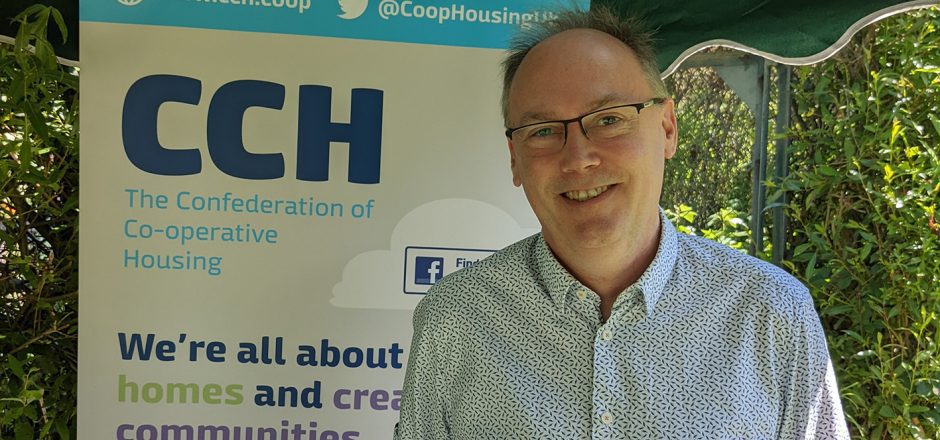The co-operative sector is aiming to meet the challenges set in 2015 by the UN’s Sustainable Development Goals, a series of 17 global objectives aimed at addressing social, economic and environmental challenges.
Right across the board projects are being developed to help align co-op policies and practices with a serious commitment to sustainable development. In the insurance and housing sectors, this is taking the form of two new tools to help businesses monitor their activities and make decisions.
The Insurance SDG Calculator
October last year saw the launch of the ICMIF-calibrated Insurance SDG Calculator at the centenary conference of the International Co-operative and Mutual Insurance Federation (ICMIF), held in Rome.
Developed by ICMIF in partnership with the Swiss Re Institute, it measures sustainability impact within individual company insurance portfolios and business operations. The ICMIF “commitment framework” enables mutuals and co-operatives to assess their own impact against a set of indicators reflecting mutual values and strategic areas, such as risk prevention, protection and micro-insurance, which offers insurance to people on lower incomes.
Related: Canada’s Co-operators highlights climate-friendly initiatives
The new tool also supports ICMIF’s corporate and sustainability strategy by making a tangible measure for their efforts available to members while identifying key areas for development. By using it, ICMIF members are able to measure their impact against 49 insurance-relevant SDG indicators (“iSDGs”) and easily measure and track their progress against the indicators, 17 SDGs and their overall company score.
Once a scoring exercise is completed by a member and opportunities for potential improvement are identified, members can then leverage the ICMIF network to share best practice and further develop their own SDG strategies whilst working towards a sustainable future.
The Icmif-calibrated Insurance SDG Calculator was co-created and tested by and with ICMIF members to ensure it takes into account the mutual difference, such as highlighting the way in which mutuals and co-operatives place the needs of their employees and members/policyholders first. It is seen as a first step towards measuring members’ insurance sustainability impact and continuing to grow the strength of the sector in the global insurance community.

“It is the first model to measure the SDGs and is a pioneering impact measurement tool for underwriting that can future-proof insurance businesses,” says ICMIF chief executive, Shaun Tarbuck. “Not only that, if embedded into insurers’ underwriting strategies, it will give them a business advantage that is sustainable and aligned to the Paris Agreement.”
After it was launched last year, several Icmif members signed up to implement the tool in the first quarter of 2023. “The more members that complete the ICMIF-calibrated Insurance SDG Calculator, the more impact we will collectively have,” adds Tarbuck.
Community-led housing
The Wayshaper toolkit aims to help simplify, accelerate and support the process when developing a community-led housing group model. It provides a way for groups to explore the needs and preferences of their members, map out priorities, explore options and make decisions.
It was developed by the Confederation of Co-operative Housing (CCH), which is now extending the toolkit to focus more on the SDGs. The new initiative will also include a ‘calculator’ element.
CCH chief officer Blase Lambert, who led a workshop on the toolkit at the Co-op Retail Conference in March, has been a leading player in the UK co-operative and community-led housing sector for over 25 years. He is also treasurer of Co-operative Housing International (CHI) and sectoral representative on the board of the International Co-operative Alliance (ICA).
“Back in 2019, the ICA created a project for the sectors to focus on the sustainable development goals and how they were applicable to each individual sector globally,” he says.

“CHI did a piece of work between 2020 and 2021 to develop specific targets, milestones and narratives around the relevant SDGs for the housing sector. We very much wanted to make them the central plank of our annual conference in both of the last two years and so what we’re seeking to do is create an additional element of our Wayshaper product that specifically focuses on SDGs.”
To this end, a sustainability toolkit is being designed as an extension of the Wayshaper resource package to assist members in meeting all the SDGs for the housing sector, which have been translated by Cooperative Housing International sector body into milestones, targets and reporting frameworks.
Related: Canadian housing co-ops in line for small grants for green projects
“Whereas Wayshaper looks at things like legal issues and governance, what type of homes, who owns the land etc, this new product is about primarily how do organisations meet the SDG goals?” adds Lambert.
The CCH has a team of people currently working on the toolkit, which Lambert describes as a ‘bolt-on’ to the Wayshaper, which will be launched in the run-up to its conference in October.
The toolkit will have three points of focus: organisation (elements of SDGs about organising and organisational form, such as gender equality and broader equality); the built environment (building fabric, materials and the way in which properties develop waste and waste systems); and living (how people occupy and live in property and homes that the housing co-op has, as well as how it is structured from an organisational perspective and how they live as a community).
Each area is linked to a specific SDG goal in line with work carried out by Co-op Housing International.
“We feel the three elements encapsulate how the housing product works with SDGs,” Lambert says, adding that for the purposes of this toolkit, the goals have been filtered down to 15.
Related: UK retail co-ops outline climate efforts in their annual reports
“There is a calculator element, but the toolkit is about much more than that. Fundamentally, it’s like a pack of cards. Each one – ie the built environment – has an option on it and there is a QR code linking to a dedicated web page. Each of the cards has the calculator element relating to it which shows carbon cost-effectiveness, relative costs and disruption.
“In the built environment area alone there are 70 options so it’s very significant. You end up with a plan for residential properties in terms of what members can afford in line with relevant priorities. What the toolkit is trying to do is enable people to consider all the relevant choices people could make.”
The Confederation of Co-operative Housing has also launched a retrofits and sustainability advice service for its membership, providing advice and guidance for member housing co-ops about upgrading residential property stock to meet 2030 and 2035 net zero targets. The first consortium of co-ops into the government’s housing decarbonisation fund has also just been secured and as the momentum around sustainability builds significantly, Lambert is hopeful about the future and also looking forward to following up his sustainability speech at retail conference with another at Co-op Congress this month (16-17 June).
“It’s about sparking interest and opening up our members and societies to new ideas, whether it’s about thinking what we say sounds really interesting or how can we leverage that to our specific needs. What is important is that everyone has a forward- looking approach to sustainability. If we can help trigger that that would be good. It’s about how you create change, not just presenting a series of statistics, it’s so much more about the journey and how you do this, and how certain choices impact other choices.”

